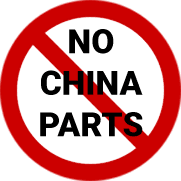What does a pilot do when the aircraft brake fails?
Aircraft brake failure is, fortunately, a rare occurrence in aviation, and if proper maneuvers are applied, there is a low chance for damage. Early aircraft were not built with brakes as their speeds were slower, and they usually landed in non-paved runways which provided enough friction to stop the plane. Advances in both plane and runway technology necessitated the need for a braking system on the ground. The braking technology on modern aircraft is sophisticated and can be tested at any time while flying. Early identification and execution of emergency procedures can also reduce the risk of injury or damage in the event of a mechanical braking issue.
One of the main priorities during a break failure is to determine the need to change the destination runway. If the scheduled runway lacks length that could help with the stoppage, it will be necessary for the plane to land at a longer runway. This is one of the reasons the pilot must contact air traffic control as they can work on finding an appropriate spot to land. In a precipitous landing situation, the pilot has a few options on how to proceed. The first option is to perform a go-around which is when the aircraft avoids landing all together or touches down for a few seconds before taking off again. Go-arounds are beneficial because they allow more time to evaluate the problem and plan a possible change in destination. Once the final decision is made to attempt a landing, the pilot will fully extend the flaps to increase drag to help slow the plane. If possible, they will choose the runway going towards the wind, which will also slow the aircraft down. As soon as the plane is entirely in contact with the ground, the pilot will cut the engines in case the plane crashes into any objects. The main goal is to allow for as much time as possible going in a straight direction on the ground because eventually, due to friction and drag, the plane will stop. Once the aircraft has come to a complete stop, the pilot will usually elect not to turn the engines back on or try to move anymore because the risk of crashing into something without brakes continues with taxiing.
While becoming increasingly rare, brake failures are a potentially devastating and expensive occurrence. Besides regular maintenance and inspection, replacing old and corroded parts is a tremendous safeguard against brake failure. Have peace of mind when finding and replacing parts by making ASAP Parts 360 your supplier. ASAP Parts 360 is an FAA 0056B accredited distributor, and PPIRS approved contractor for the DOD and federal aviation community. Explore our expansive catalog of both new and obsolete parts and find what you are looking for today. Reach out to us directly or use our “request a quote” and get an answer within 15 minutes.


